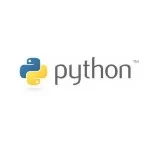20 Advanced Python Packages for Exploratory Data Analysis
In the realm of data-driven decision-making, Exploratory Data Analysis (EDA) stands as a crucial preliminary step—an essential compass that guides data scientists and analysts toward uncovering the concealed narratives and valuable patterns within a dataset. It’s the process where data takes on life, revealing its stories, quirks, and secrets.
Python, renowned for its versatility and an expansive ecosystem of libraries, offers a treasure trove of tools to embark on this exploratory journey efficiently. In this article, we delve into the world of data exploration and discovery, taking you through 12 advanced Python packages that will elevate your EDA game to new heights.
From the fundamental tasks of data manipulation to the intricate realms of visualization and statistical analysis, these packages will equip you with the means to scrutinize data comprehensively. Whether you’re a seasoned data scientist or a newcomer to the field, these tools will empower you to extract insights, uncover anomalies, and pave the path for data-driven decisions.
You can also explore our Core Python Cheatsheet which serves as a quick reference guide for Python programming. It covers some of the most commonly used syntax and features of the language, including data types, control structures, functions, modules, and libraries.
1. Benefits of Exploratory Data Analysis (EDA)
Exploratory Data Analysis (EDA) offers several significant benefits in the field of data science and analytics:
| Benefits of Exploratory Data Analysis (EDA) | Elaboration |
|---|---|
| 1. Data Understanding | EDA helps data scientists gain a deep understanding of the dataset’s characteristics and structure. It reveals data types, distributions, and initial insights. |
| 2. Data Cleaning | EDA identifies and addresses missing values, outliers, and inconsistencies, ensuring data quality and reliability in subsequent analyses. |
| 3. Feature Engineering | By exploring relationships between variables, EDA can inspire the creation of new features or transformations, potentially enhancing model performance. |
| 4. Pattern Recognition | EDA uncovers underlying patterns, trends, and correlations within the data, providing valuable insights for decision-making and modeling. |
| 5. Hypothesis Testing | EDA leads to the formulation of hypotheses about the data, which can be rigorously tested using statistical methods to validate or invalidate assumptions. |
| 6. Model Selection | Understanding data characteristics through EDA helps data scientists choose appropriate algorithms and techniques for predictive modeling. |
| 7. Data Visualization | EDA leverages visual representations (e.g., plots, charts) to effectively communicate data findings, making complex information accessible to stakeholders. |
| 8. Outlier Detection | EDA identifies outliers—data points that deviate significantly from the norm—allowing for appropriate handling to prevent skewed analyses or models. |
| 9. Decision-Making Support | EDA provides data-driven insights that support informed decision-making processes, aiding organizations in making strategic and data-backed choices. |
| 10. Reduced Risk | Thorough EDA minimizes the risk of erroneous assumptions, pitfalls, or errors in data analysis, safeguarding against incorrect conclusions or modeling. |
| 11. Efficiency | EDA saves time and resources by helping data scientists focus on relevant variables and analyses, streamlining the overall data science workflow. |
| 12. Improved Communication | EDA’s use of visualizations and non-technical language facilitates effective communication of insights to stakeholders with varying levels of expertise. |
In summary, EDA is a crucial step in the data analysis process that not only uncovers insights but also improves data quality, supports informed decision-making, and enhances the overall efficiency of data science projects. It serves as the foundation upon which meaningful analyses and predictive models are built.
Exploratory Data Analysis (EDA) plays a pivotal role in the data science workflow, serving as a critical preliminary step. Through EDA, you unlock valuable insights within your data, paving the way for enhanced machine-learning model performance.
1. Pandas
- Description: Pandas is a fundamental library for data manipulation and analysis. It provides data structures like DataFrames and Series for handling structured data efficiently.
- Example:
1 2 3 | import pandas as pddata = {'Column1': [1, 2, 3, 4], 'Column2': ['A', 'B', 'C', 'D']}df = pd.DataFrame(data) |
2. NumPy
- Description: NumPy is the foundation for numerical computing in Python. It offers arrays and functions for performing mathematical operations on large datasets.
- Example:
1 2 3 | import numpy as npdata = [1, 2, 3, 4, 5]arr = np.array(data) |
3. Matplotlib
- Description: Matplotlib is a powerful library for creating static, animated, or interactive visualizations in Python.
- Example:
1 2 3 4 | import matplotlib.pyplot as pltx = [1, 2, 3, 4]y = [10, 12, 5, 8]plt.plot(x, y) |
4. Seaborn
- Description: Seaborn is built on top of Matplotlib and provides an easier way to create informative and attractive statistical graphics.
- Example:
1 2 3 | import seaborn as snsdata = sns.load_dataset('iris')sns.pairplot(data, hue='species') |
5. Plotly
- Description: Plotly is an interactive visualization library that allows you to create interactive plots and dashboards.
- Example:
1 2 3 | import plotly.express as pxdf = px.data.iris()fig = px.scatter(df, x='sepal_width', y='sepal_length', color='species') |
6. Statsmodels
- Description: Statsmodels is used for statistical modeling and hypothesis testing. It provides tools for estimating and interpreting models for various statistical analyses.
- Example:
1 2 3 | import statsmodels.api as smx = sm.add_constant(x)model = sm.OLS(y, x).fit() |
7. Scikit-Learn
- Description: Scikit-Learn is a machine learning library that includes tools for classification, regression, clustering, and more.
- Example:
1 2 3 | from sklearn.linear_model import LinearRegressionmodel = LinearRegression()model.fit(x, y) |
8. NetworkX
- Description: NetworkX is used for the creation, manipulation, and study of complex networks or graphs.
- Example:
1 2 3 | import networkx as nxG = nx.Graph()G.add_edge('A', 'B') |
9. Dask
- Description: Dask is a parallel computing library that scales to larger-than-memory computations. It’s useful for working with large datasets.
- Example:
1 2 | import dask.dataframe as dddf = dd.read_csv('large_dataset.csv') |
10. Feature-Engine
- Description: Feature-Engine provides tools for feature engineering, including variable transformations, imputation, and encoding.
- Example:
1 2 3 | from feature_engine.encoding import OneHotEncoderencoder = OneHotEncoder(variables=['Category'])df_encoded = encoder.fit_transform(df) |
11. SweetViz
- Description: SweetViz is a library for automatic exploratory data analysis, generating detailed data reports and visualizations.
- Example:
1 2 3 | import sweetviz as svreport = sv.analyze(df)report.show_html('data_report.html') |
12. Yellowbrick
- Description: Yellowbrick is a visualization library for machine learning. It provides visual tools to aid in model selection and evaluation.
- Example:
1 2 3 4 | from yellowbrick.classifier import ConfusionMatrixcm = ConfusionMatrix(model)cm.score(x_test, y_test)cm.show() |
13. Vaex
- Description: Vaex is a Python library for lazy, out-of-core DataFrames. It’s designed for handling large datasets efficiently and can perform operations on massive data without loading it all into memory.
- Example:
1 2 3 | import vaexdf = vaex.example()df_filtered = df[df['age'] > 30] |
14. D-Tale
- Description: D-Tale is an interactive, web-based tool for visualizing and exploring data in Pandas DataFrames. It provides a user-friendly interface for data analysis and visualization.
- Example:
1 2 3 4 | import dtaleimport pandas as pddf = pd.read_csv('data.csv')dtale.show(df) |
15. HiPlot
- Description: HiPlot is a visualization tool for understanding high-dimensional data. It’s particularly useful for hyperparameter optimization and exploring the behavior of complex models.
- Example:
1 2 3 4 5 | import hiplot as hipexperiments = [{'lr': 0.01, 'batch_size': 32, 'accuracy': 0.92}, {'lr': 0.1, 'batch_size': 64, 'accuracy': 0.89}, {'lr': 0.001, 'batch_size': 128, 'accuracy': 0.95}]hip.Experiment.from_iterable(experiments).display() |
16. Featuretools
- Description: Featuretools is a library for automated feature engineering. It can automatically create new features from existing data, potentially improving model performance.
- Example:
1 2 3 | import featuretools as ftentityset = ft.demo.load_mock_customer()features, feature_defs = ft.dfs(entityset=entityset, target_entity='customers') |
17. Prophet
- Description: Prophet is an open-source forecasting tool developed by Facebook. It’s designed for time series forecasting tasks and can handle daily observations with strong seasonal patterns.
- Example:
1 2 3 4 5 | from fbprophet import Prophetmodel = Prophet()model.fit(df)future = model.make_future_dataframe(periods=365)forecast = model.predict(future) |
18. Modin
- Description: Modin is a library that accelerates Pandas DataFrames by using parallel and distributed computing. It’s designed to make data manipulation faster, especially for large datasets.
- Example:
1 2 3 | import modin.pandas as pddf = pd.read_csv('large_dataset.csv')df_filtered = df[df['value'] > 50] |
19. H2O.ai
- Description: H2O.ai is a platform for machine learning and artificial intelligence. It provides tools for building, training, and deploying machine learning models, as well as automated machine learning (AutoML) capabilities.
- Example:
1 2 3 | from h2o.automl import H2OAutoMLautoml = H2OAutoML(max_runtime_secs=3600)automl.train(x=x, y=y, training_frame=train) |
20. Shapely
- Description: Shapely is a Python library for geometric operations and manipulation of geometric objects. It’s particularly useful for spatial data analysis and geospatial applications. Shapely allows you to work with and analyze geometric shapes, making it invaluable for tasks related to geographical data, maps, and spatial analysis.
- Example:
1 2 3 4 | from shapely.geometry import Point, Polygonpoint = Point(0, 0)polygon = Polygon([(0, 0), (0, 1), (1, 1), (1, 0)])result = point.within(polygon) |
These Python packages offer a rich set of tools and capabilities for efficiently exploring and analyzing data, making them indispensable resources for data scientists and analysts.
2. Conlcusion
In conclusion, Exploratory Data Analysis (EDA) stands as an indispensable cornerstone of the data science journey, offering a multitude of invaluable benefits. By delving deep into the intricacies of our datasets, EDA empowers data scientists and analysts to not only understand their data but also refine it, extract meaningful patterns, and make data-driven decisions with confidence.
From the essential tasks of data cleaning and feature engineering to the profound insights uncovered through pattern recognition and hypothesis testing, EDA is the compass that guides us through the wilderness of data. It shapes our models, streamlines our workflows, and ultimately drives us toward data-backed solutions and informed choices.
As we navigate the ever-expanding realm of data, EDA remains our trusted ally, reducing risks, improving efficiency, and enhancing communication with stakeholders. It is the foundational step that propels us into the heart of data science, where knowledge is power, and insights pave the way for innovation and informed decision-making.
So, embrace Exploratory Data Analysis as more than just a preliminary task; recognize it as the key that unlocks the true potential of your data, enabling you to harness its hidden treasures and embark on transformative data-driven journeys.



